Great Danes are one of the most sweetest, loyal dogs available. While they look very intimidating, they’re one of the best family dogs.
But, one thing that people forget to take into consideration is whether they shed a lot or not. So, do Great Danes Shed?
Great Danes are known as moderate shedders which means they shed more than some, but less than others.
However, it will look like a lot since they’re on the larger side. Be careful during the spring, as this is when they’ll blow their coat. Taking some additional measures will help control the shedding.
Let’s take a look at the Great Danes’ shedding habits so you know exactly what you’re getting yourself into when you decide to adopt a Great Dane into your family.
Plus, we’ll share some additional tips in getting the shedding under control.
Do Great Danes Shed?
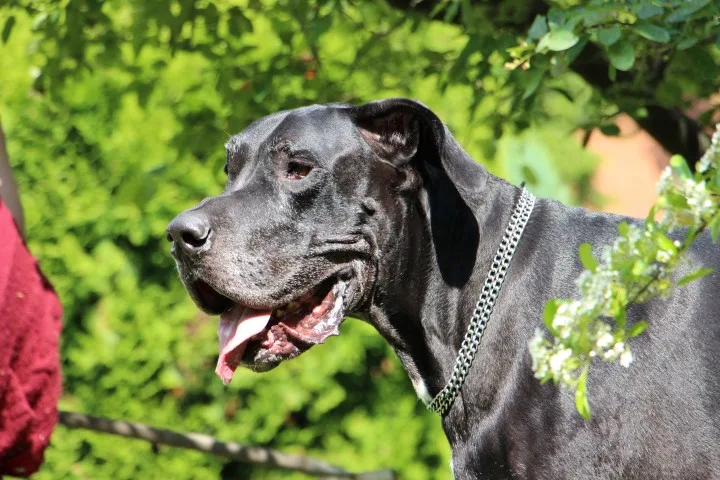 Great Danes are classified as moderate shedders, meaning they shed less than other breeds. However, merely because of the dog’s size, you’ll notice that they shed a lot.
Great Danes are classified as moderate shedders, meaning they shed less than other breeds. However, merely because of the dog’s size, you’ll notice that they shed a lot.
If having a hair-free home is important to you, you might want to consider a smaller dog.
During the spring, Great Danes shed the most. This is also known as the ‘blowing out’ season, and it is when your gentle giant sheds his winter coat to keep cool in the summer.
Despite the fact that Great Danes have a single coat, they will shed hair all over the house.
Different Stages Of A Great Danes Shedding
It makes no difference whether your dog has a single or double coat; the follicles have a life cycle that affects when and how much the dog sheds.
The Four Stages
New hair develops at its fastest during the anagen phase (growth phase). The hair is said to be at the catagen phase when it stops growing and achieves its peak (transition phase).
When the hair is in the telogen (resting) phase, it is neither growing nor falling out.
The hair is considered to be in the exogen phase when it reaches the end of its cycle and falls out (the transition phase).
Growth rates, as well as the beginning and finish points of each cycle, vary per dog breed. The hair cycle has four primary stages, although there is never a moment when nothing happens.
Even while it is falling out, the hair never stops doing something.
Poodles, for example, who have hair instead of fur, will stay in the growth phase until their hair is trimmed.
The hair may stay in the growing phase for longer depending on the climate, which helps to keep the dog warm during the winter months.
What Is A Great Danes’ Coat Like?
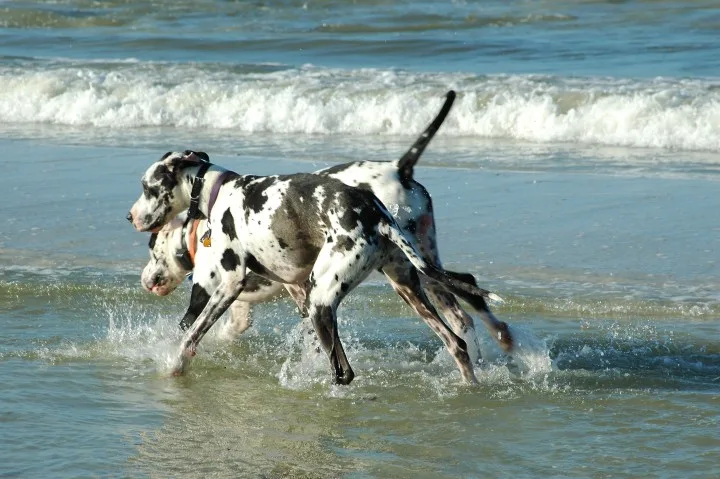 All dogs’ coats are divided into two types: single coats and double coats. Any dog with a double coat sheds more than one with a single coat because they lose more hair.
All dogs’ coats are divided into two types: single coats and double coats. Any dog with a double coat sheds more than one with a single coat because they lose more hair.
Despite the fact that Great Danes are classified as single-coat dogs, they will appear to shed a lot due to their size.
The Great Dane has a single-layer coat that is smooth and short. It’s low-maintenance and simple to groom. The Great Dane sheds over most of the year, with greater shedding in the spring.
One thing is certain about every dog: the shedding cycle cannot be stopped. It is not avoidable, and it is a natural occurrence in dogs.
The amount of hair they shed is determined by the breed and kind of hair. It also relies on your dog’s eating habits.
While excessive shedding might indicate a dog’s health, it can also indicate a poor diet or an allergy to specific foods.
How Much Do Great Danes Shed?
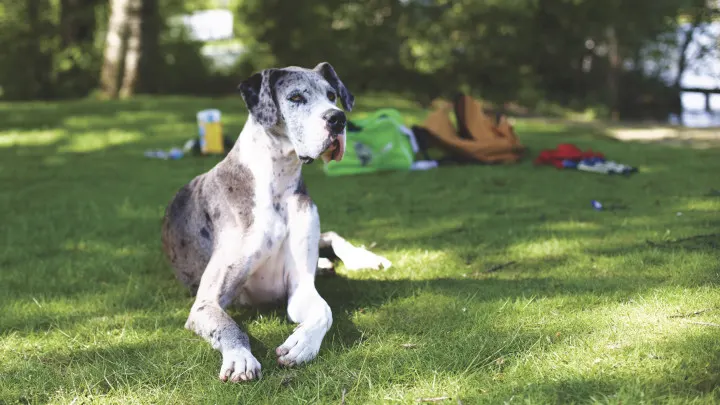 If your Great Dane were the same size as any other single-coat dog, he or she would shed around the same amount, if not somewhat less. Because the breed is so large, we see a lot of shed hair.
If your Great Dane were the same size as any other single-coat dog, he or she would shed around the same amount, if not somewhat less. Because the breed is so large, we see a lot of shed hair.
When they lose their winter coats in the spring, they go through a “blowing out” phase. It usually happens as the weather warms up and there is more daylight.
There are just a few occasions during the year that a Great Dane sheds a lot. It’s a good idea to have the dog checked out by the vet if they’re shedding excessively during other times, for health reasons.
When Do Great Danes Shed The Most?
In the spring, you’ll notice that your house has more hair than in the winter. Although Great Danes shed less than other single-coat breeds, you will still need to vacuum your home on a daily basis.
How Do You Manage Shedding In A Great Dane?
Grooming your dog is the most effective approach to keep shedding under control. When you have a Great Dane, you must develop and keep to a brushing regimen.
Brushing on a regular basis increases blood flow and eliminates all loose, dead hair.
- Install wood flooring: If you have wooden flooring, you should have less hair than if you have a carpet. Wooden floors will need brushing and wiping over to keep them looking nice, while carpet would need to be vacuumed regularly.
- Remove the dead hair: Even though Great Danes’ hair does not grow long enough to mat and tangle, the dead hair must be removed. Outside is the ideal location for brushing your Great Dane. While grooming your dog, this will reduce the amount of hair that will fly around inside.
- Brush even during non-shedding seasons: During the non-shedding season, use a hard bristle brush once or twice a week, and then use it daily once shedding begins. During the shedding season, brushing them should take between 10 and 15 minutes each day.
- Bathe your dog: Another technique to keep shedding under control is to take a bath. Although a Great Dane should not be bathed more than once a week. Anything more will strip the hair and skin of its vital oils, leaving the skin dry and irritated.
If you notice that your Great Dane is shedding more than usual, you should examine the food you’re providing him.
To keep skin and hair as healthy as possible, it’s a good idea to include Omega 3 in your diet.
Fresh water should be available at all times throughout the day will guarantee that any excess bacteria and toxins are flushed from the body
Tools To Assist You
A Furminator de-shedding brush is one of the best brushes for use on a Great Dane. This is an excellent brush for dogs with either type of coat.
If you can’t get your hands on a Furminator, a good bristle brush will suffice. If you’re going to give your dog a bath, be sure to use doggy shampoo and conditioner.
Don’t be tempted to use your own shampoo since the pH won’t be right for your dog’s skin and it might irritate it.
Are Great Danes Hypoallergenic?
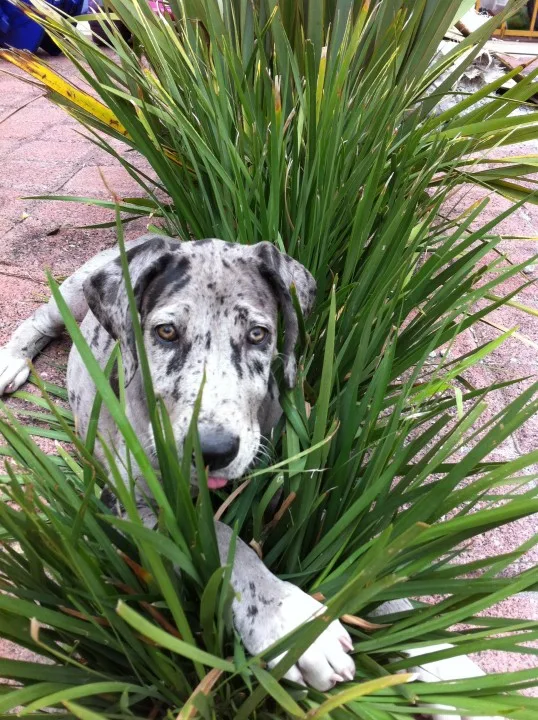 The answer to this query is a resounding negative; Great Danes are not known to be hypoallergenic. Because of their enormous size, they are classified as moderate shedders.
The answer to this query is a resounding negative; Great Danes are not known to be hypoallergenic. Because of their enormous size, they are classified as moderate shedders.
The reality regarding hypoallergenic dogs and shedders is that all dogs shed, and there is no such thing as a fully hypoallergenic dog.
Even dogs with little hair shed to some extent, and a Great Dane will lose more hair than the average dog simply because of their size!
Are Some Great Danes More Prone To Shedding Than Others?
Because there are no variances in the Great Dane breed, they all shed the same amount. You’ll notice that each puppy sheds roughly the same amount.
Only if anything else bothers a Dane, such as an allergy or sickness, he will shed more. Although Great Dane coats are considered low-maintenance and controllable, hair will still be found all over the house.
Causes For Excessive Shedding In Great Danes
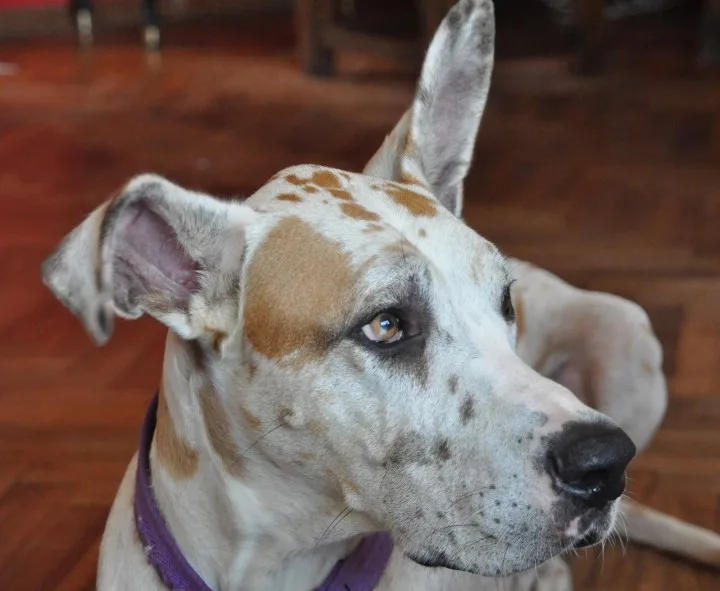 If you notice your dog shedding more than what you’re used to, then there may be an issue that needs attention.
If you notice your dog shedding more than what you’re used to, then there may be an issue that needs attention.
Therefore, we’ve created this short list of common reasons your Great Dane may be shedding excessively.
Diet
It is important that your Great Dane eats a healthy diet in order to maintain healthy skin and hair.
When your dog is no longer a puppy, he should not consume puppy chow since it lacks the essential nutrients he needs as an adult. Great Dane puppy food is different from adult dog food.
Stress
Anxiety disorders are uncommon in Great Danes, though they would prefer not to be left alone.
Stress can cause your dog to shed more, so if you see your dog shedding more than usual, take him to the doctor for a check-up.
Allergies
Allergies and sensitivity to the sun might cause your dog to shed more than usual. The veterinarian will be able to conduct tests to determine what is causing the excessive shedding.
These allergies can be toward food as well. In this case, it’s a good idea to take a look at their diet and start eliminating fillers and by-products.
As a matter of fact, your dog shouldn’t be eating those anyway as they can cause a slew of health issues.
Heather is an animal lover that has many of them herself. She currently has her Blue Nose Staffy named Bootsie, but she’s catered to many animals over the years including guinea pigs, alpacas, cockatiels, cockatoos, bunnies, chinchillas, hedgehogs, and more. She believes that knowledge should be the foundation of caring for any pet.

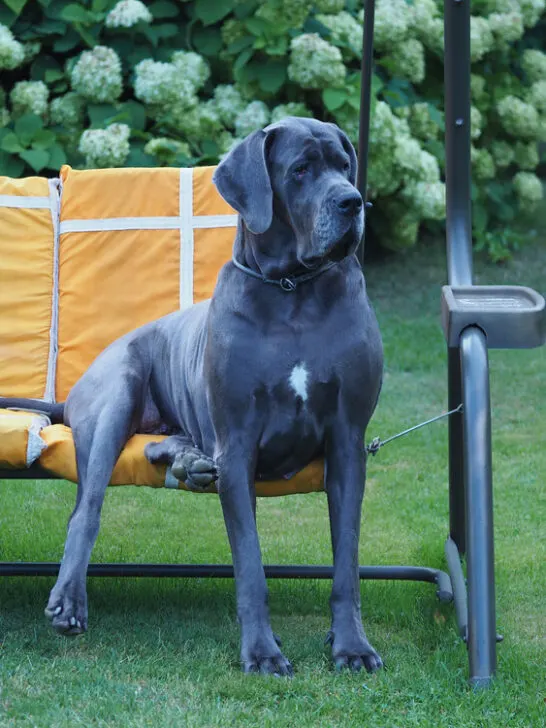

Leave a comment
You must be logged in to post a comment.